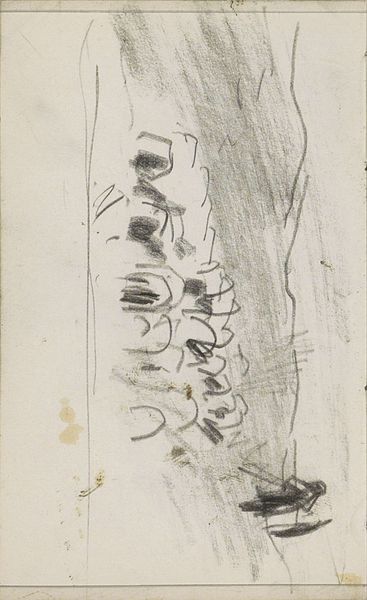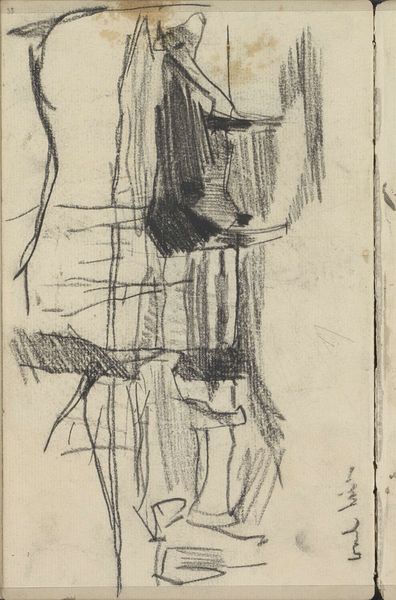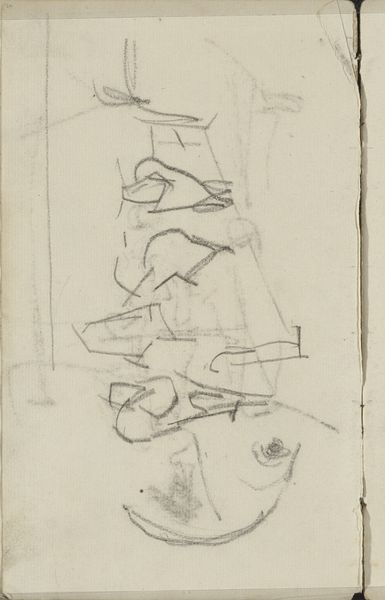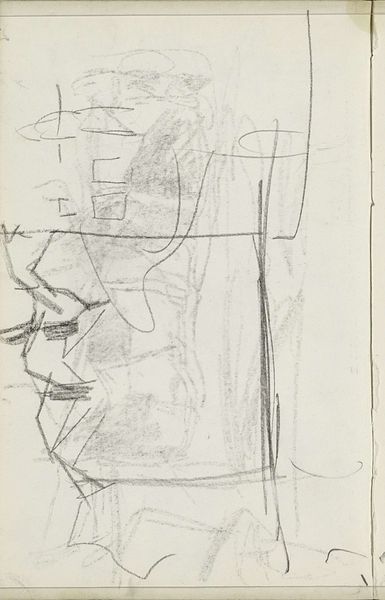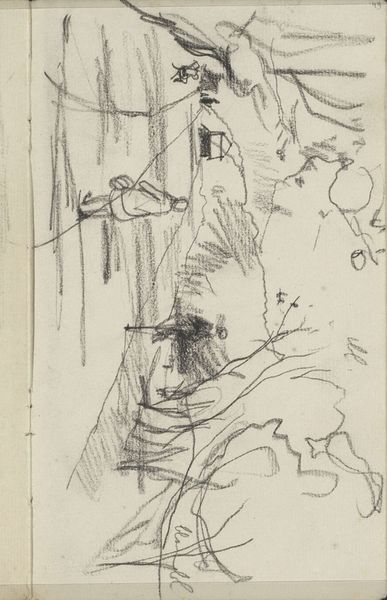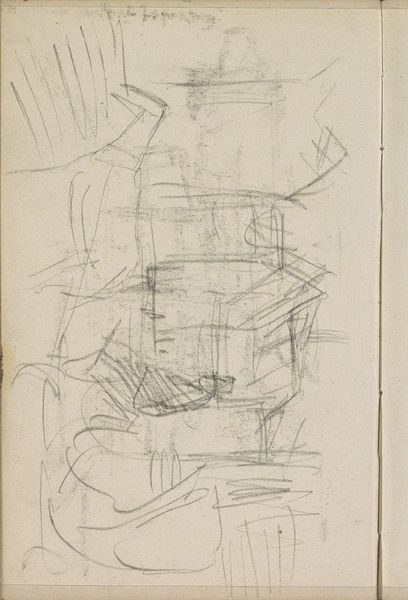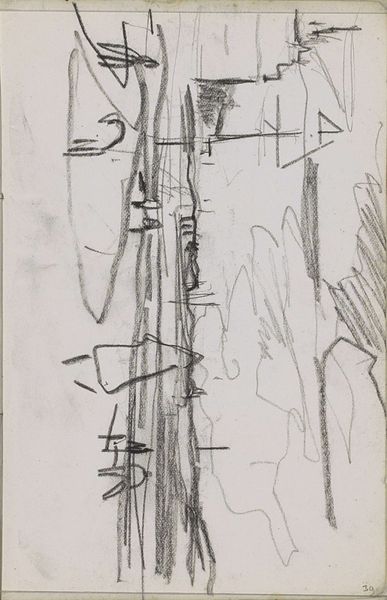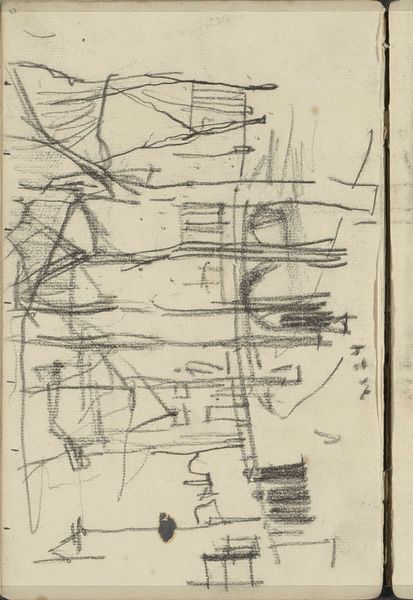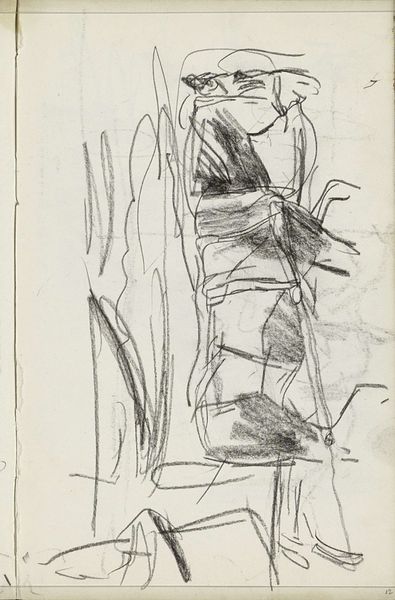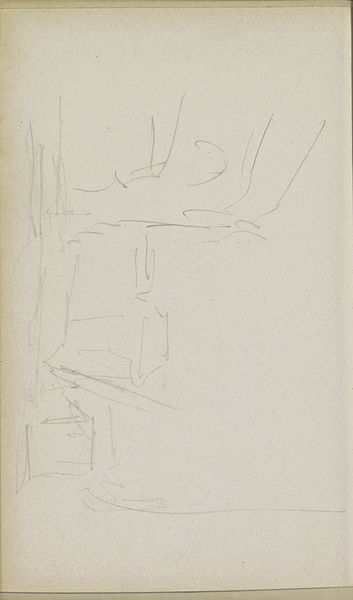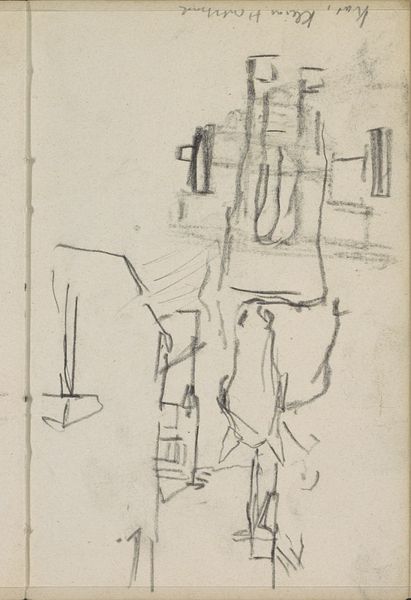
drawing, pencil, graphite
#
drawing
#
amateur sketch
#
impressionism
#
sketch book
#
incomplete sketchy
#
landscape
#
personal sketchbook
#
sketchwork
#
detailed observational sketch
#
pen-ink sketch
#
pencil
#
graphite
#
sketchbook drawing
#
sketchbook art
#
initial sketch
Copyright: Rijks Museum: Open Domain
Editor: This is Anton Mauve's "Landschap met een groep figuren," a graphite and pencil drawing, made sometime between 1848 and 1888. It looks like a page from a sketchbook, a quick study of a landscape and some figures. It’s very rough, not polished at all. How do you interpret this work? Curator: The roughness is precisely what speaks to me. Mauve, working during a time of significant social upheaval, presents us with a vision that moves away from idealized portrayals of the landscape. It feels deeply personal, almost a resistance to academic formality. Do you notice how the figures seem almost swallowed by the landscape? Editor: I do, they're just scribbles really. Is that commentary on the individual’s place within society, or…? Curator: Precisely. Considering the rise of industrialization during Mauve's time, we can read this as a statement on the diminishing role of the individual, particularly the rural worker, against the backdrop of overwhelming progress. This piece might critique the power structures relegating the working class to near invisibility. What does the landscape itself suggest to you? Editor: It feels... undefined. Unfinished, even. Not romanticized, that's for sure. More realistic and, frankly, kind of bleak. Curator: It reflects a shift in artistic perspective—a move away from the picturesque towards a grittier reality. Think of the social realism that was emerging then. Mauve, perhaps unconsciously, taps into the anxieties of a rapidly changing world. Consider too the artistic legacy - this wasn't just a pretty picture, it was about making a statement. How do you think art can be a form of activism? Editor: Well, seeing how Mauve uses a simple sketch to hint at bigger social issues, I guess art can be a quiet but powerful way to raise questions. It gives us something to talk about. I didn’t expect so much depth in what looked like a doodle. Curator: Exactly! It reveals that even the most unassuming sketch can carry immense socio-political weight. It reinforces the necessity of situating art within broader intersectional narratives to fully grasp its significance. I'm glad we explored that together.
Comments
No comments
Be the first to comment and join the conversation on the ultimate creative platform.
